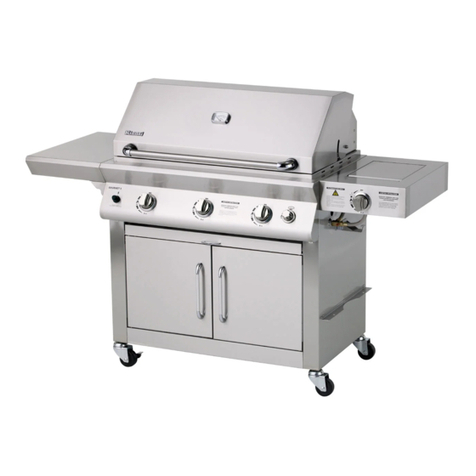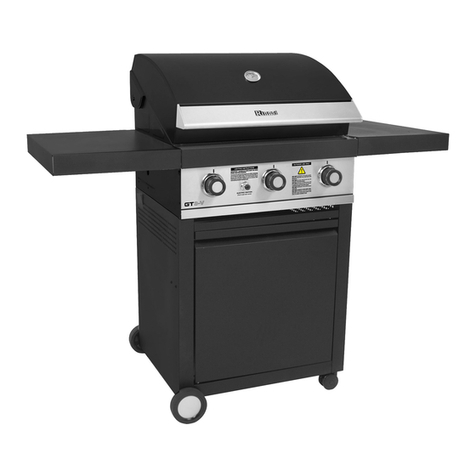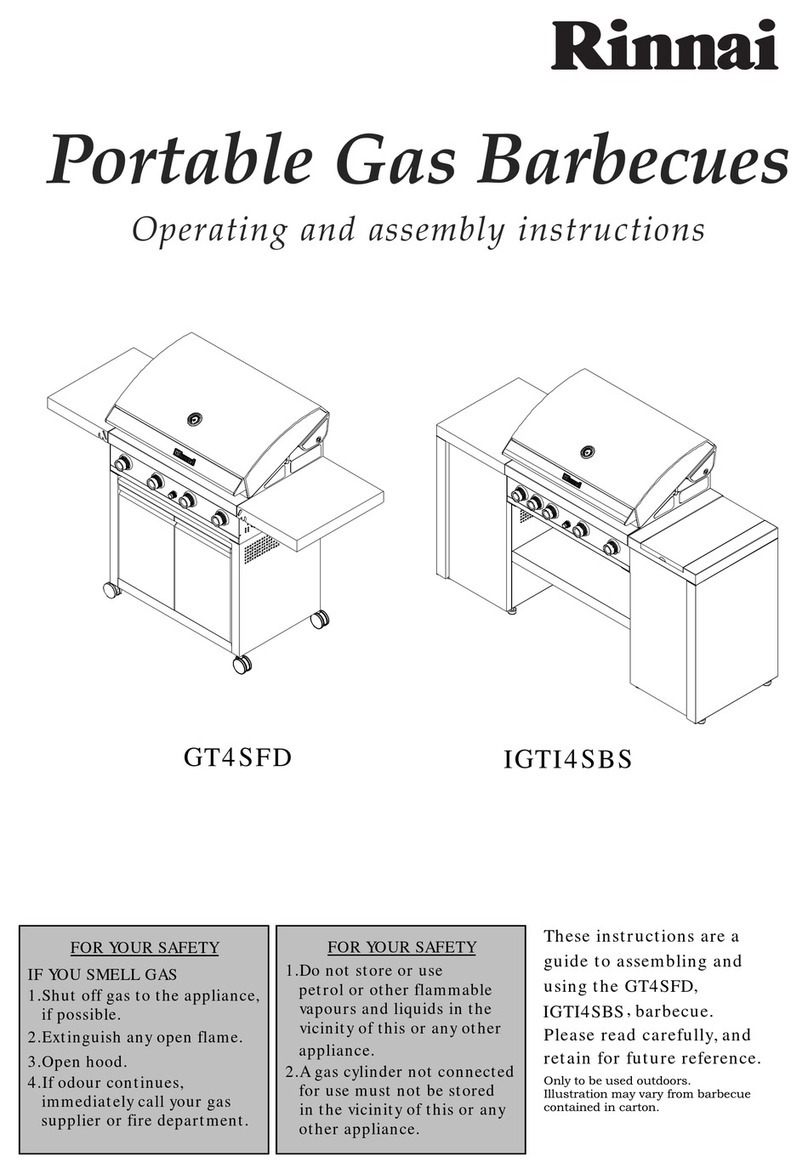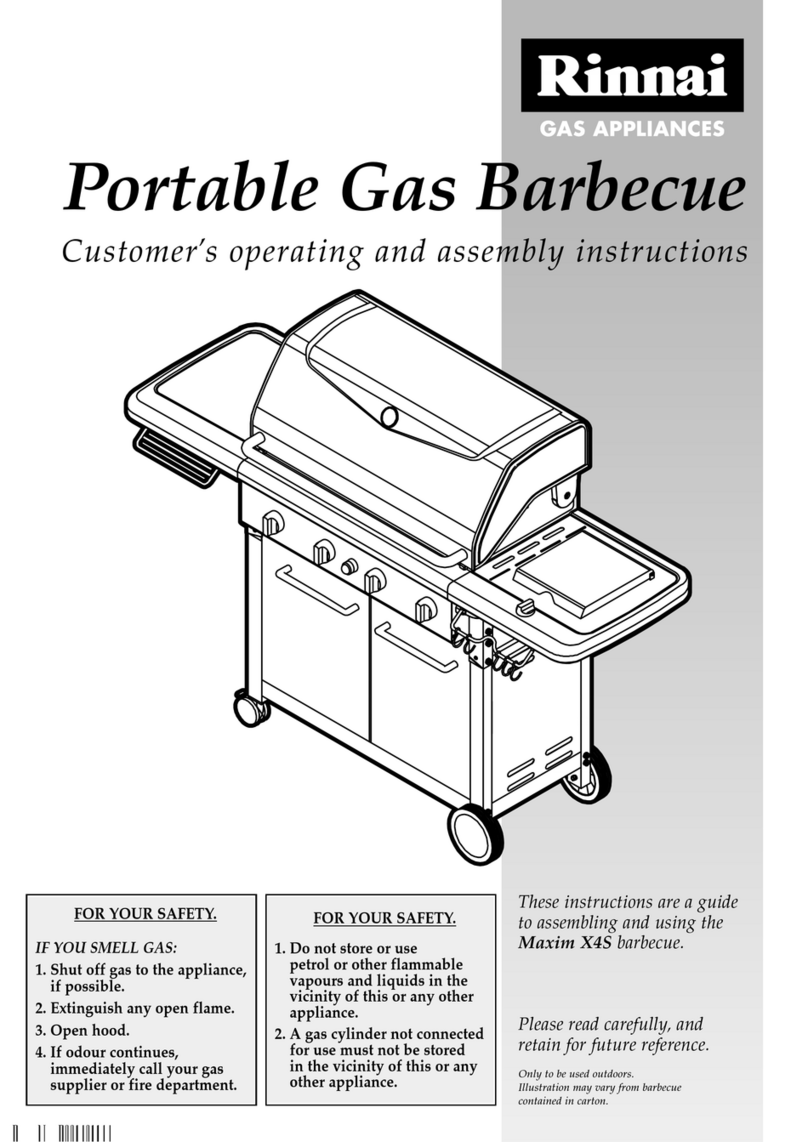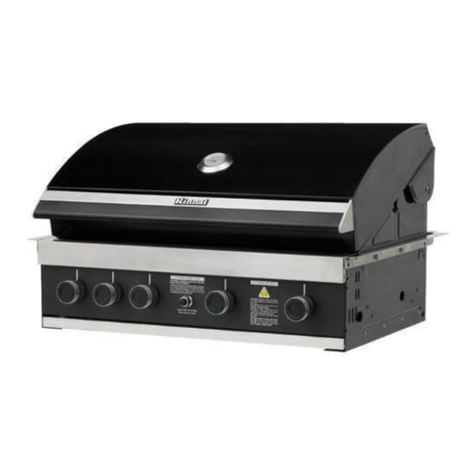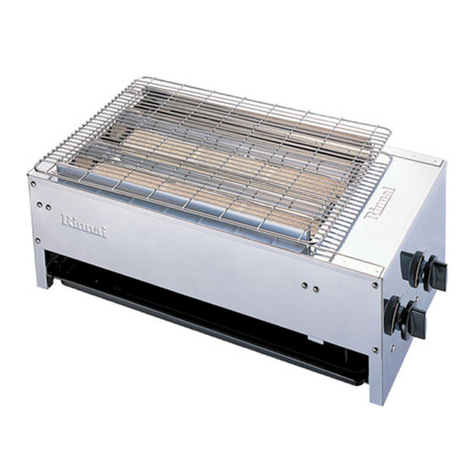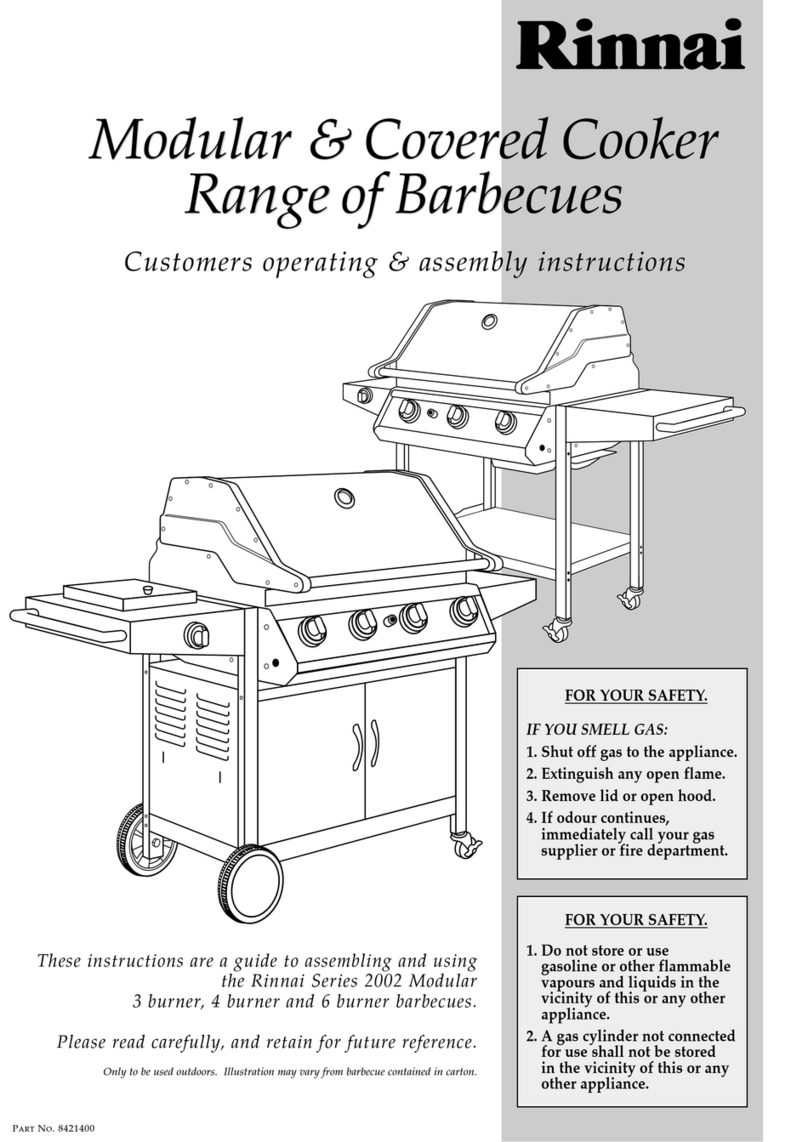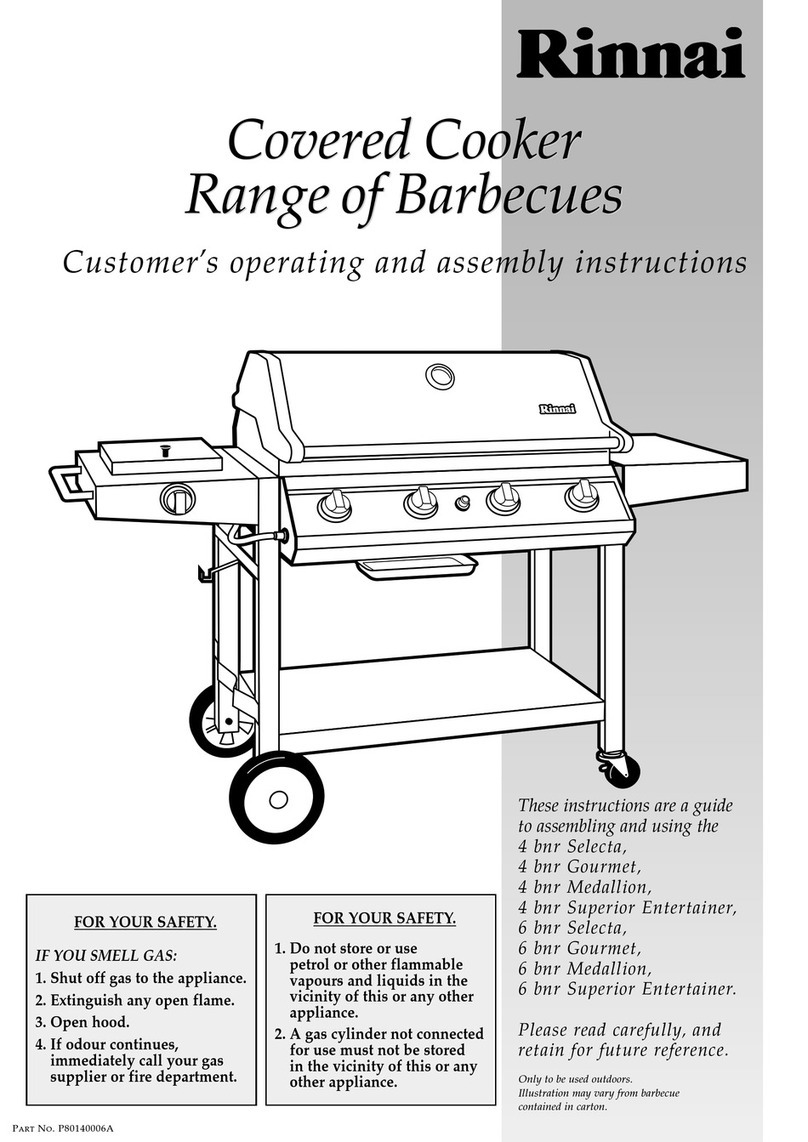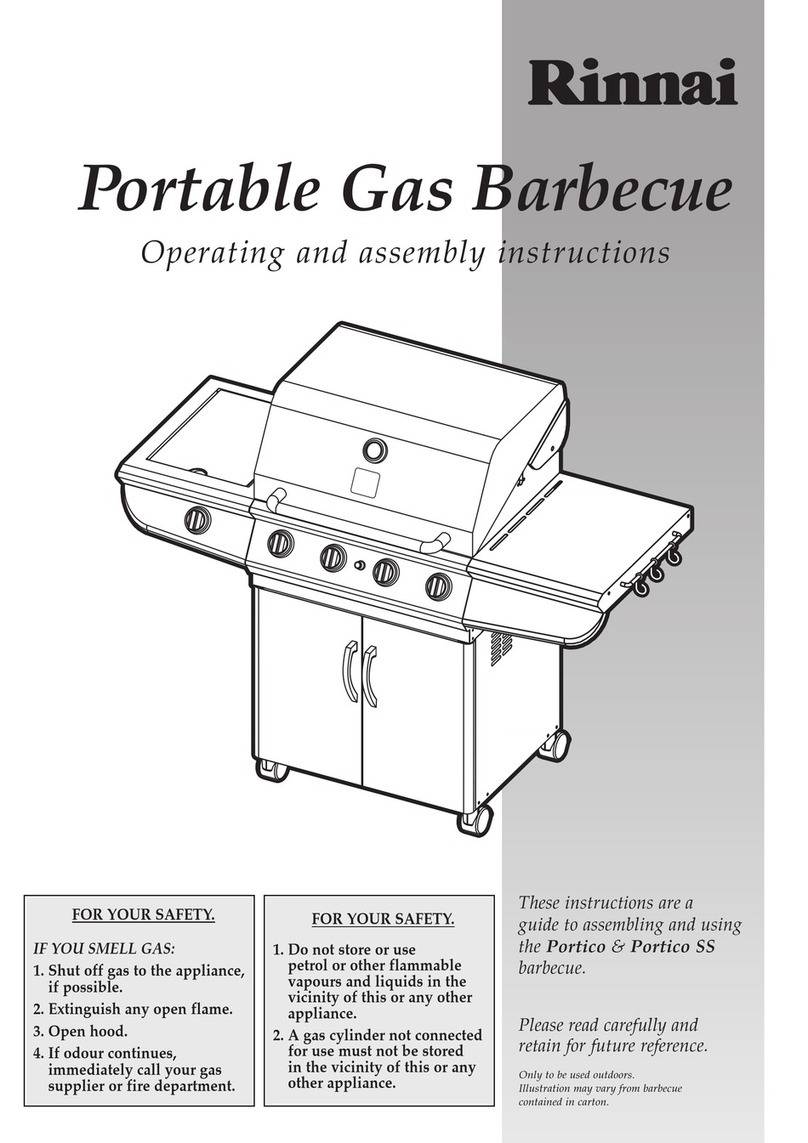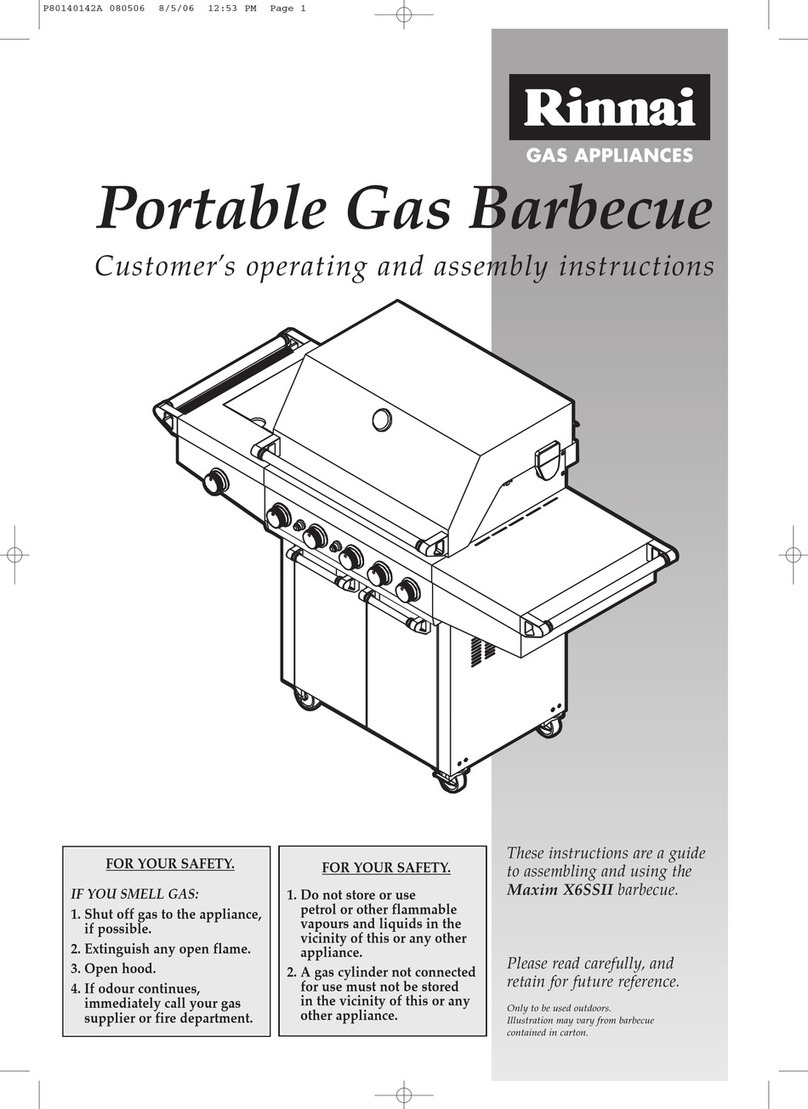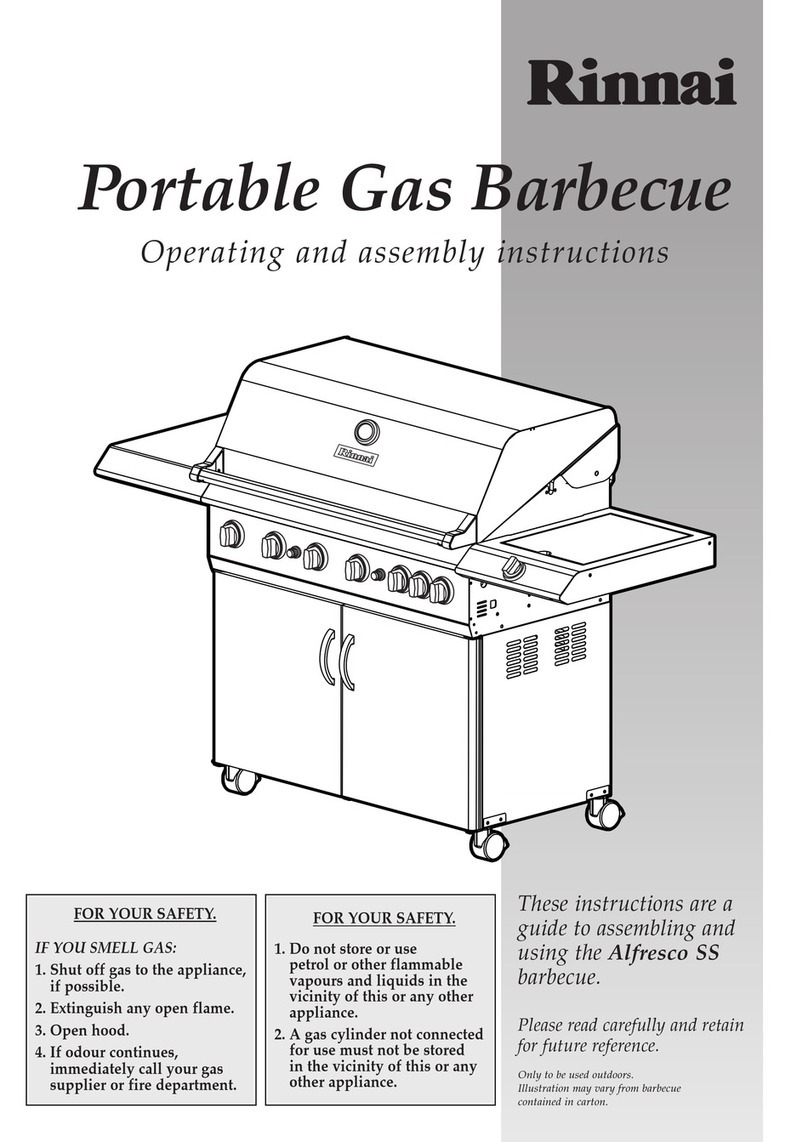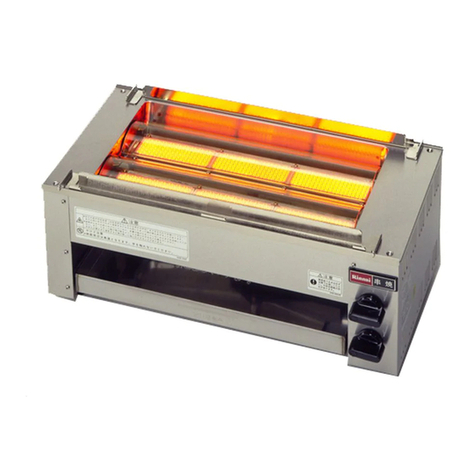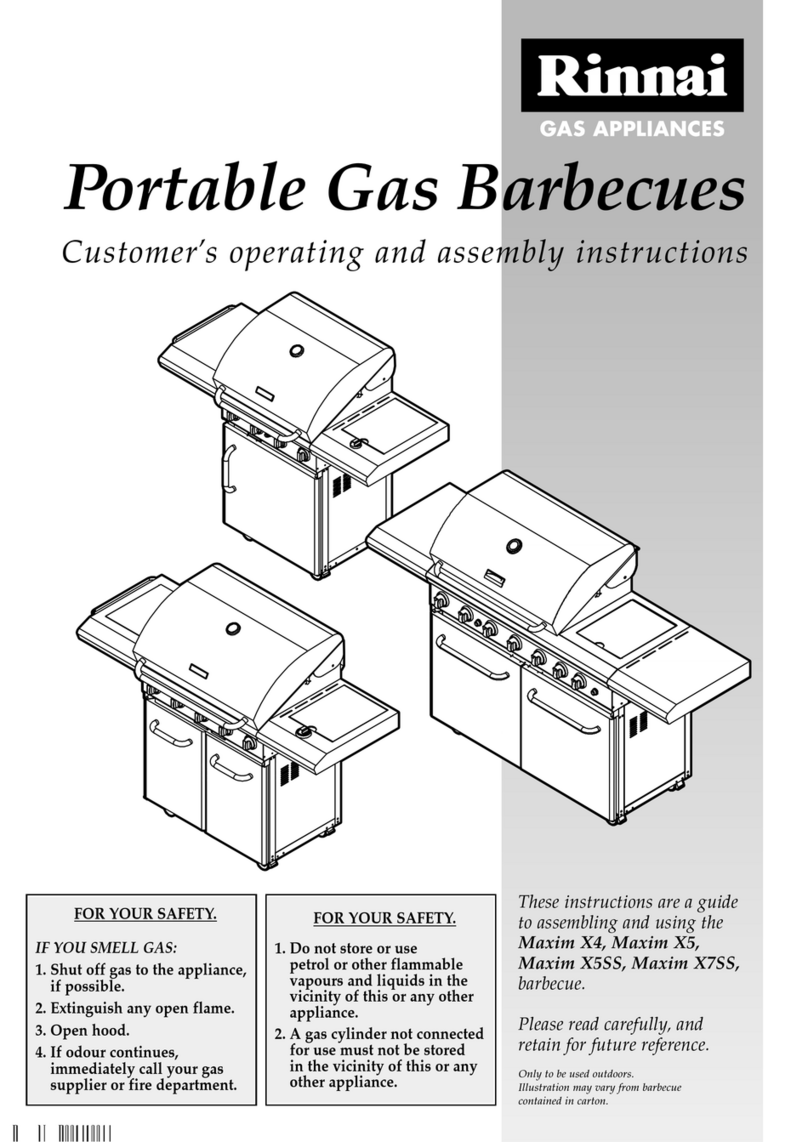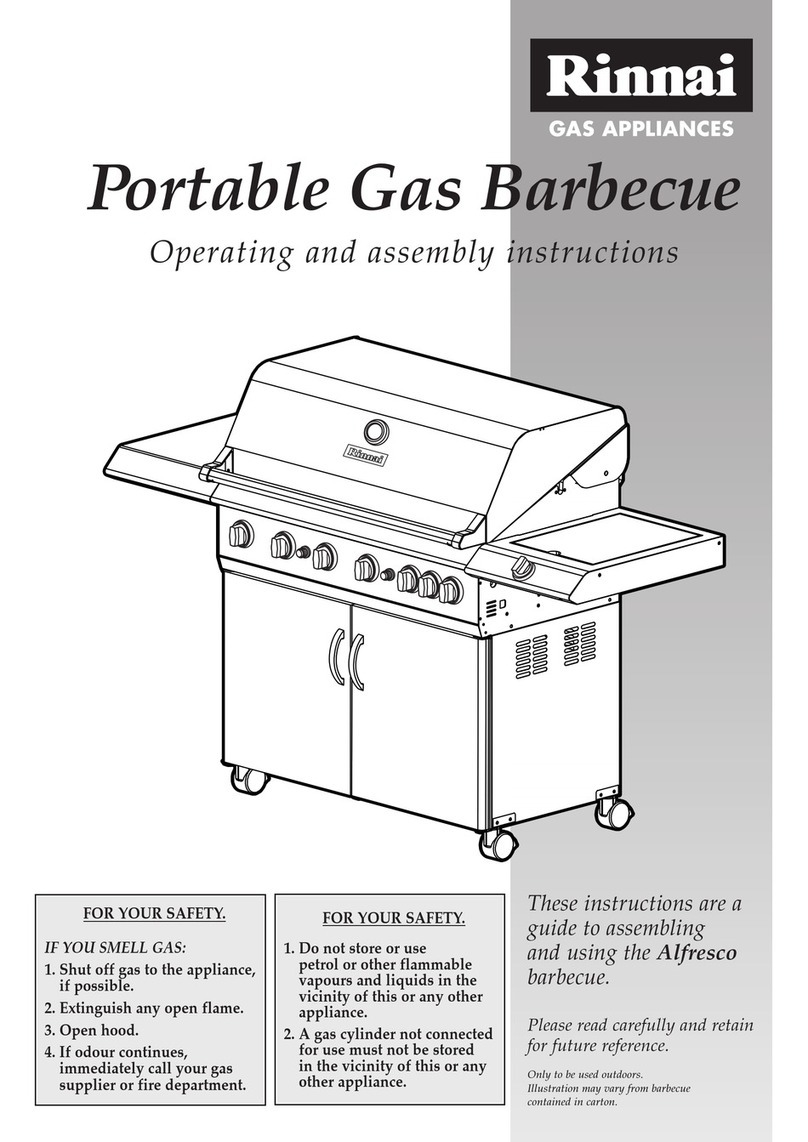Rinnai Australia - 4 - BBQ Owner’s Operation Manual
•DONOT move barbecue whilst hot or in operation. Lock wheels during use.
•DO
NOT close the side burner lid whilst the side burner is alight.
•DO
NOT allow children or the infirm to operate or handle any parts of the barbecue.
•DO
wear appropriate clothing whilst operating the barbecue. Some synthetic fabrics (such
as Nylon) are highly flammable and should be avoided.
•DO
use good quality insulated oven mitts when operating the barbecue.
• If burners go out during operation, close the gas supply at the source and turn all burner
controls to ‘OFF’. Open the hood and wait at least 5 minutes before attempting to relight.
• Should a grease fire occur attempt to shut off the gas supply at the source, turn off all
burners and remove food if possible.
• Observe the instructions and warnings on the rotisserie motor case and electric cord at all
times. If electrical cord is damaged, return to supplier for repair.
STORAGE
•DO
NOT store your gas cylinder indoors. Gas cylinders must be stored outdoors in a well
ventilated area out of reach of children and must not be stored in a building, garage or any
other enclosed area.
• Barbecues using bottled gas: If stored indoors, ALWAYS disconnect and remove the gas
cylinder first. Gas cylinders must be stored outdoors in a well ventilated area out of reach of
children. They MUST NOT be stored in a building, garage or any other enclosed area or in
the vicinity of this or any other appliance.
•DO
NOT store or use petrol or other flammable vapours and liquids in the vicinity of this or
any other appliance.
GAS CYLINDER (Propane or Universal LPG)
• This barbecue is designed for use with a 9kg LP Gas cylinder. This cylinder should conform
to AS 2030.1 - 1999. DO NOT connect this barbecue to a gas cylinder of different capacity.
• The barbecue is designed for use in the vapour withdrawal mode. Therefore it is important
to always store and use the gas cylinder in an upright position.
• For storage and when refilling / exchanging cylinders, disconnect the hose and regulator at
the cylinder end only. Do not disconnect the hose and regulator from the barbecue end.
• The gas cylinder should be refilled by a reputable gas dealer, or exchanged at a reputable
gas cylinder exchange outlet. Gas cylinders should be inspected and tested periodically in
accordance with local statutory regulations. A dented or rusty gas cylinder may be
hazardous and should not be used.
•DO
NOT subject the gas cylinder to excessive heat.
• Always close the cylinder valve when the barbecue is not in use.
HOSE AND REGULATOR
• Replacement pressure regulators and hose assemblies must be those specified by Rinnai
for use with this appliance.
• Avoid twisting of the hose.
• Keep the gas hose away from hot surfaces or dripping grease or oil.
Propane or Universal LPG
• The pressure regulator and hose assembly supplied with the appliance MUST be used.
• The pressure regulator supplied is fixed to have an outlet pressure of 2.75 kPa, any other
pressure is not suitable. The regulator and hose assembly are for bottled LP gas ONLY.
• When the barbecue is not in use, the hose and regulator must only be disconnected from
the cylinder. The hose and regulator must not be disconnected from the barbecue unless it
is being replaced. Such replacement must only be carried out by an Authorised person.
• Inspect the gas hose when replacing the gas cylinder, or once per year, whichever is more
frequent. If the hose is cracked, cut, abraded, discoloured or damaged in any other way, the
barbecue must not be used. The hose must be replaced if damaged or when local
regulations require this. Contact your supplier or local regulating authority if uncertain.
Such replacement must only be carried out by an Authorised person.
Natural Gas
• Inspect the gas hose at least once per year. If the hose is cracked, cut, abraded, discoloured
or damaged in any other way, the barbecue must not be used. The hose must be replaced if
damaged or when local regulations require this. Contact your supplier or local regulating
authority if uncertain. Replacement must only be carried out by an Authorised person.
SAFETY INFORMATION
